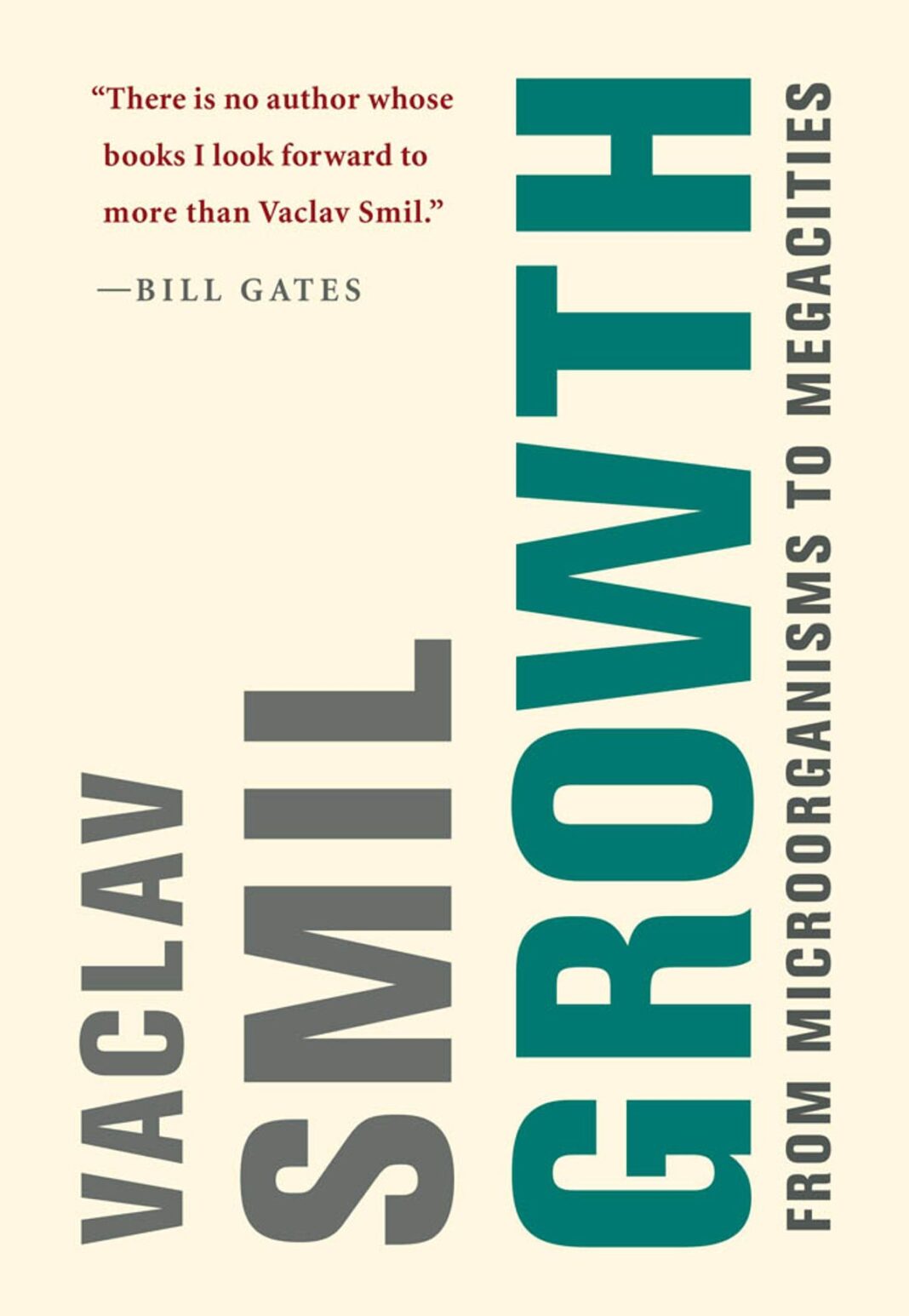Recently it has been possible to claim that 90% or more of all the extant information in the world has been generated over the preceding two years.
==========
Results of the British referendum of June 23, 2016, about remaining in the EU or leaving it, provided another perfect illustration of how the rate of change matters more than the outcome. In 94% of the areas where the foreign-born population increased by more than 200% between 2001 and 2014, people voted to leave the European Union—even though the share of migrants in those regions had remained comparatively low, mostly less than 20%. In contrast, most regions where the foreign-born population was more than 30% voted to remain. As The Economist concluded, “High numbers of migrants don’t bother Britons; high rates of change do” (Economist 2016).
==========
The history of ubiquitous artifacts illustrates two opposite mass trends: miniaturization of commonly used components and devices on one hand (a trend enabled to an unprecedented degree by the diffusion of solid-state electronics), and a substantial increase in the average mass of the two largest investments modern families make, cars and houses, on the other.
==========
People think about houses primarily in terms of habitable area but its substantial increase—in the US from 91 m2 of finished area (99 m2 total) in 1950 to about 240 m2 by 2015 (Alexander 2000; USCB 2017)—has resulted in an even faster growth rate for materials used to build and to furnish them. A new 240 m2 house will need at least 35 tonnes of wood, roughly split between framing lumber and other wood products, including plywood, glulam, and veneer (Smil 2014b). In contrast, a simple 90 m2 house could be built with no more than 12 tonnes of wood, a threefold difference.
==========
As a result, new houses built in 2015 are about 2.6 times larger than was the 1950 average, but for many of them the mass of materials required to build them is four times as large.
==========
The bestselling American car in 1908 was Ford Model T weighing 540 kg. The bestselling vehicle in 2018 was not a car but a truck, Ford’s F-150 weighing 2,000 kg.
==========
In 1981 the average mass of American cars and light trucks was 1,452 kg; by the year 2000 it had reached 1,733 kg; and by 2008 it was 1,852 kg (and had hardly changed by 2015), a 3.4-fold increase of average vehicle mass in 100 years (USEPA 2016b).
==========
The bestselling American car in 1908 was Ford Model T weighing 540 kg. The bestselling vehicle in 2018 was not a car but a truck, Ford’s F-150 weighing 2,000 kg.
==========
Gallup pollsters have been asking Americans irregularly how happy they feel since 1948 (Carroll 2007). In that year 43% of Americans felt very happy. The measure’s peak, at 55%, was in 2004, the low point came after 9/11 at 37%, but by 2006 it was 49%, hardly any change compared to more than half a century ago (47% in 1952)!
==========
Logistic curves have been a favorite tool of forecasters because of their ability to capture, often very closely, growth trajectories of both living organisms and anthropogenic artifacts and processes. Undoubtedly, their use can provide valuable insights but, at the same time, I must caution against any overenthusiastic reliance on logistic curves as failure-proof forecasting tools.
==========
Since 1900, the maximum battery energy densities rose from 25 Wh/kg for lead-acid units to about 300 Wh/kg for the best lithium-ion designs in 2018, a 12-fold gain that fits a logistic curve predicting about 500 Wh/kg by 2050 (figure 1.20). We must hope that new discoveries will vault us onto a new logistic trajectory as even 500 Wh/kg is not enough for battery-powered machines to displace all liquid derived from crude oil: the diesel fuel used to power heavy machines, trains, and ships has energy density of 13,750 Wh/kg.
==========
There is only one Qomolangma (Mount Everest) at 8,848 m (figure 1.25), just four mountains between 8.2 and 8.6 km, 103 mountains between 7.2 and 8.2 km, and about 500 mountains higher than 3.5 km (Scaruffi 2008). Similarly, there is only one Greenland (about 2.1 million km2) and just three other islands larger than 500,000 km2, more than 300 islands larger than 1,000 km2, thousands of protuberances smaller than 100 km2, and so on.
==========
But highly asymmetric distribution is also a common outcome among anthropogenic growth processes. Towns have grown into cities and many cities have evolved into large metropolitan areas or conurbations in every country on every inhabited continent—but in 2018, there was only one Tokyo metro area with nearly 40 million inhabitants (figure 1.25), 31 cities had more than 10 million people, more than 500 cities had surpassed 1 million, and thousands of cities were larger than 500,000 (UN 2014 and 2016). On linear scales, plots of such distributions produce curves that are best characterized either by exponential functions or by a power-law function.
==========
But that was not so in the case of Simon Newcomb, an English mathematician and astronomer, who was the first to describe the first digit problem, chronologically the first suggestion of a widely applicable power law (Raimi 1976). Newcomb noticed that the first pages of frequently used logarithmic tables wear out much faster than the last ones and that “the first significant figure is oftener 1 than any other digit, and the frequency diminishes up to 9” (Newcomb 1881, 39).
==========
Only in 1938 did Frank Benford, an American physicist working for General Electric (GE), provide the quantitative backup for the (now eponymous) law of anomalous numbers by analyzing the percentage of times the natural numbers one to nine are used as first digits in numbers compiled from more than 20,000 observations of various physical and social phenomena (Benford 1938). The first digit came up 30.6% of the time, the second one 18.5%, and the last one just 4.7% (figure 1.26).
==========
What has become perhaps the most famous power-law distribution (thanks to the influence of economics in public affairs) was described by Vilfredo Pareto, an Italian economist (Pareto 1896). He noted that much like 20% of pea pods in his garden yielded 80% of all harvested peas, just 20% of rich Italians owned 80% of all land, and this principle turned out to be applicable to many natural, economic, and social phenomena.
==========
As a result, the relative growth rate of plants decreases with increasing plant size as M−1/4, and primary productivity is little affected by species composition: an identical density of plants with similar overall mass will fix roughly the same amount of carbon.
==========
But almost immediately ecologists began to question the universality of the metabolic scaling theory in general, and the remarkable invariance of exponents across a wide range of species and habitats in particular. Based on some 500 observations of 43 perennials species whose sizes spanned five of the 12 orders of magnitude of size in vascular plants, Reich et al. (2006) found no support for ¾-power scaling of plant nighttime respiration, and hence its overall metabolism. Their findings supported near-isometric scaling, that is exponent ~ 1, eliminated the need for fractal explanations of the ¾-power scaling and made a single size-dependent law of metabolism for plants and animals unlikely.
==========
Not surprisingly, the growth of organisms and their metabolic intensity are far too complex to be expressed by a single, narrowly bound, formula.
==========
But the comparison with large cetaceans is actually misleading because, as with every large tree, most of the giant sequoia phytomass is dead wood, not living tissue.
==========
An endothermic shrew sized as a tiny insect would have too much body surface in relation to its body volume and its radiative heat loss (particularly during cooler nights) would be so high that it would have to eat constantly but that would require spending more energy on incessant searching for food. That is why we have no smaller mammal than the Etruscan pygmy shrew (Suncus etruscus) with average body mass of 1.8 (1.5–2.5) g and 3.5 cm long without its tail.
==========
The same imperative limits the minimum bird size: there is no smaller bird that than the bee hummingbird (Mellisuga helenae)—endemic to Cuba and now near threatened (IUCN 2017b)—with average body mass of 1.8 (1.6–2.0) g and length of 5–6 cm.
==========
At the other extreme, the growth of endotherms reduces the ratio of their surface area to their body volume (this would eventually lead to overheating), and massive animals would also encounter mechanical limits. Their volume and body mass will grow with the third power of their linear dimensions while the feet area needed to support that growing mass will scale up only with the second power, putting an extraordinary load on leg bones.
==========
Indeed, mammalian capillaries have an identical radius and the animals have an identical number of heartbeats per lifetime although their sizes span eight orders of magnitude, from shrews to whales (Marquet et al. 2005). The entire system must be optimized to reduce resistance, and a complex mathematical derivation indicates that the animal metabolism must scale with the ¾ power of body mass.
==========
This crowding is also a perfect illustration of how maximization of profit drives growth even as that growth is not optimal. Studies have shown that broilers convert feed more efficiently, grow heavier, and have lower mortality when given more space (Thaxton et al. 2006), but as Fairchild (2005) noted broiler farmers cannot afford low densities because they would not achieve a satisfactory return. Similarly, feeding efficiency and daily weight gain of pigs improve with lower stocking density, but the overall return (total meat sold) is marginally higher with the highest density.
==========
Consequently, no terrestrial animal can now grow meat as efficiently as chickens, while ducks need about 50% more feed per unit weight gain, and the recent ratios for American turkeys have been between 2.5 and 2.7. This reality explains the extraordinary rise of chicken production from a relatively minor share of total meat output right after WWII to its recent dominance in many markets.
==========
Of course, many people have argued that without antibiotics the modern meat industry would collapse, but the recent Danish experience with a more than halving of the use of antibiotics in livestock demonstrates otherwise (Aarestrup 2012).
==========
For more than 50 years, America’s cattlemen have been accelerating this growth by using steroid hormones implanted under the skin on the back of an ear. They dissolve in 100–120 days and promote the growth in finishing beef lots (NCBA 2016). Four out of five of beef animals in US feedlots receive the treatment, and three naturally occurring hormones (estradiol, progesterone, and testosterone) and three synthetic compounds (Zeranol, Trenbolone, and Melengestrol) are approved for use.
==========
Nevertheless, the use of hormones in meat production has been prohibited in the European Union since 1981 and the ban survived a US and Canadian challenge (European Commission 2016).
==========
Rates of average consumption of high-quality animal proteins are the best explanation of significant height differences through history.
==========
As a result, cow milk—one of the best sources of protein for human growth and a staple food among many northern European populations—was consumed much less in the Mediterranean countries.
==========
American milk consumption was stable during the first half of the 20th century and steadily declined afterwards, while Dutch consumption was increasing until the 1960s and, despite its subsequent decline, is still above the US level; Dutch males, smaller than Americans before WWII, surpassed their American peers after 1950.
==========
The subsequent history of civilization can be seen as a quest for ever higher reliance on extrasomatic energies (Smil 2017a). The process began with the combustion of phytomass (chemical energy in wood, later also converted to charcoal, and in crop residues) to produce heat (thermal energy) and with small-scale conversions of water and wind flows into kinetic energy of mills and sails.
==========
… the 1954 census found only 26% of French homes with an indoor toilet and only 10% with a bathtub, shower, or central heating, while 42% still did not have even running water (Prost 1991).
==========
Roman viae were well founded and drained and they were topped with gravel, large stones set in mortar, or concrete mixed with broken stones or bricks. By the beginning of the 4th century CE, their total length reached about 85,000 km and I have calculated that the task required as much as 1.2 billion labor days, or an annual equivalent of some 20,000 full-time workers during more than 600 years of expansion and maintenance (Smil 2017a).




